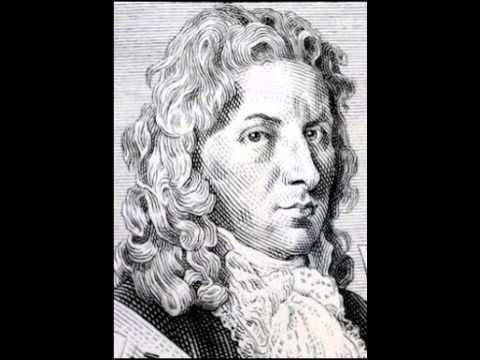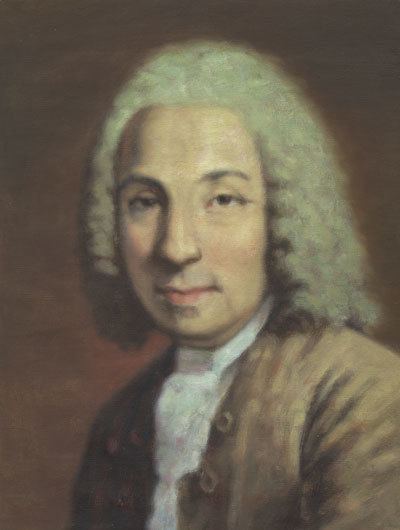Name Johann Stamitz Children Anton Stamitz | Role Composer | |
 | ||
Died March 27, 1757, Mannheim, Germany Compositions Symphony in D major - Op 3 - No 2, Symphony in D major - Op 3 - No 2, Trios - Op 1, Trios - Op 1, Sinfonia Pastorale in D major - op 4 no 2 (Wolf D4): I Pastorale: Presto, Sinfonia Pastorale in D major - op 4 no 2 (Wolf D4): I Pastorale: Presto, Symphony in E-flat major - op 11 no 3: III Menuetto, Symphony in E-flat major - op 11 no 3: III Menuetto, Quartett fur Oboe - Violine - Viola und Violoncello in Es-Dur: III Rondo, Quartett fur Oboe - Violine - Viola und Violoncello in Es-Dur: III Rondo, Symphony in A major "Mannheim no 2": III Presto, Symphony in A major "Mannheim no 2": III Presto, Sonate fur Viola und Klavier in B-Dur: III Rondo, Sonate fur Viola und Klavier in B-Dur: III Rondo, Flute Concerto in C major: Prestissimo, Flute Concerto in C major: Prestissimo, Orchestral Trio in C minor - op 4 no 3: I Allegro, Orchestral Trio in C minor - op 4 no 3: I Allegro, Symphony in E-flat major - op 4 no 4 (Wolf Eb4): IV Presto, Symphony in E-flat major - op 4 no 4 (Wolf Eb4): IV Presto, Orchestral Trio in E major - op 5 no 3: I Allegro, Orchestral Trio in E major - op 5 no 3: I Allegro, Flute Concerto in C major: II Andante poco adagio, Flute Concerto in C major: II Andante poco adagio, Orchestral Trio in D major - op 1 no 4: III Menuet, Orchestral Trio in D major - op 1 no 4: III Menuet, Flute Concerto in G major: II Adagio, Flute Concerto in G major: II Adagio, Orchestral Trio in D major - op 1 no 4: I Presto assai, Orchestral Trio in D major - op 1 no 4: I Presto assai, Concerto for Viola and Orchestra in G major: I Allegro, Concerto for Viola and Orchestra in G major: I Allegro, Symphonie in Es-Dur: III Menuett, Symphonie in Es-Dur: III Menuett, Orchestral Trio in F major - op 1 no 6: III Menuet, Orchestral Trio in F major - op 1 no 6: III Menuet, Orchestral Trio in C major - op 1 no 1: II Andante ma non adagio, Orchestral Trio in C major - op 1 no 1: II Andante ma non adagio, Trio in A Major - Op 1 No 2: IV Prestissimo, Trio in A Major - Op 1 No 2: IV Prestissimo, Symphony in F major - op 4 no 1 (Wolf F3): II Andante, Symphony in F major - op 4 no 1 (Wolf F3): II Andante, Symphony in G major "Mannheim no 1": I Allegro, Symphony in G major "Mannheim no 1": I Allegro, Symphony in G major "Mannheim no 1": III Presto, Symphony in G major "Mannheim no 1": III Presto, Orchestral Trio in B-flat major - op 1 no 5: IV Allegro, Orchestral Trio in B-flat major - op 1 no 5: IV Allegro, Symphony in F major - op 4 no 1 (Wolf F3): IV Presto assai, Symphony in F major - op 4 no 1 (Wolf F3): IV Presto assai, Symphony in E-flat major - op 11 no 3: IV Prestissimo, Symphony in E-flat major - op 11 no 3: IV Prestissimo, Trumpet Concerto in D: II Adagio, Trumpet Concerto in D: II Adagio, Orchestral Trio in B-flat major - op 1 no 5: III Menuet, Orchestral Trio in B-flat major - op 1 no 5: III Menuet, Sinfonia Pastorale in D major - op 4 no 2 (Wolf D4): III Minuetto - Trio, Sinfonia Pastorale in D major - op 4 no 2 (Wolf D4): III Minuetto - Trio, Quartett fur Oboe - Violine - Viola und Violoncello in Es-Dur: II Adagio, Quartett fur Oboe - Violine - Viola und Violoncello in Es-Dur: II Adagio, Konzert fur Klarinette - Fagott und Orchester in B-Dur: II Andante moderato, Konzert fur Klarinette - Fagott und Orchester in B-Dur: II Andante moderato, Orchestral Trio in D major - op 1 no 4: IV Allegro spirito, Orchestral Trio in D major - op 1 no 4: IV Allegro spirito, Symphonie in Es-Dur: IV Finale, Symphonie in Es-Dur: IV Finale, Symphonie in Es-Dur: I Allegro vivace, Symphonie in Es-Dur: I Allegro vivace, Symphony in E-flat major - op 4 no 4 (Wolf Eb4): III Minuetto I - Minuetto II, Symphony in E-flat major - op 4 no 4 (Wolf Eb4): III Minuetto I - Minuetto II, Sinfonia Pastorale in D major - op 4 no 2 (Wolf D4): II Larghetto, Sinfonia Pastorale in D major - op 4 no 2 (Wolf D4): II Larghetto, Orchestral Trio in E major - op 5 no 3: II Adagio, Orchestral Trio in E major - op 5 no 3: II Adagio, Symphony in D major - op 3 no 2: II Andantino, Symphony in D major - op 3 no 2: II Andantino, Orchestral Trio in B-flat major - op 1 no 5: II Lento, Orchestral Trio in B-flat major - op 1 no 5: II Lento, Concerto for Viola and Orchestra in G major: II Adagio, Concerto for Viola and Orchestra in G major: II Adagio, Symphony in E-flat major - op 11 no 3: II Andantino, Symphony in E-flat major - op 11 no 3: II Andantino, Konzert fur Klarinette - Fagott und Orchester in B-Dur: I Allegro moderato, Konzert fur Klarinette - Fagott und Orchester in B-Dur: I Allegro moderato, Orchestral Trio in E major - op 5 no 3: IV Presto, Orchestral Trio in E major - op 5 no 3: IV Presto, Symphony in E-flat major - op 4 no 4 (Wolf Eb4): II Andante, Symphony in E-flat major - op 4 no 4 (Wolf Eb4): II Andante, Flute Concerto in D major: III Presto non assai, Flute Concerto in D major: III Presto non assai, Symphony in G major "Mannheim no 1": II Larghetto, Symphony in G major "Mannheim no 1": II Larghetto, Orchestral Trio in F major - op 1 no 6: I Allegro di molto, Orchestral Trio in F major - op 1 no 6: I Allegro di molto, Orchestral Trio in F major - op 1 no 6: IV Allegro, Orchestral Trio in F major - op 1 no 6: IV Allegro, Flute Concerto in D major: I Allegro, Flute Concerto in D major: I Allegro, Symphony in E-flat major - op 4 no 6 (Wolf Eb5): II Adagio, Symphony in E-flat major - op 4 no 6 (Wolf Eb5): II Adagio, Orchestral Trio in C major - op 1 no 1: III Menuet, Orchestral Trio in C major - op 1 no 1: III Menuet Similar People Carl Stamitz, Sabine Meyer, Johann Nepomuk Hummel, Neville Marriner, Hakan Hardenberger | ||
La melodia germanica johann stamitz
Jan Vaclav Antonin Stamic (later, during his life in Mannheim, Germanized as Johann Wenzel Anton Stamitz; June 18, 1717, Deutschbrod, Bohemia – March 27, 1757, Mannheim, Electorate of the Palatinate) was a Czech composer and violinist. His two surviving sons, Carl and Anton Stamitz, were scarcely less important composers of the Mannheim school, of which Johann is considered the founding father. His music is stylistically transitional between Baroque and Classical periods.
Contents
- La melodia germanica johann stamitz
- Johann stamitz missa solemnis in d major c 1750
- Life
- Compositions
- Innovations in the Classical symphony
- References

Johann stamitz missa solemnis in d major c 1750
Life
Stamitz's family came from Marburg (today Maribor, Slovenia).

Stamitz spent the academic year 1734–1735 at the University of Prague. After only one year, he left the university to pursue a career as a violin virtuoso. His activities during the six-year period between his departure from the university in 1735 and his appointment in Mannheim around 1741 are not precisely known.
He was appointed by the Mannheim court in 1741 or 1742. Most likely, his engagement there resulted from contacts made during the Bohemian campaign and coronation of Carl Albert (Karl VII) of Bavaria, a close ally of the Elector Palatine. In January 1742, Stamitz performed before the Mannheim court as part of the festivities surrounding the marriage of Karl Theodor, who succeeded his uncle Karl Philipp as Elector Palatine less than a year later; Carl Albert was among the wedding guests.
Stamitz married Maria Antonia Luneborn on July 1, 1744. They had five children together, Carl Philipp, Maria Franziska, Anton Thadaus Nepomuk, and two children who died in infancy.
Probably around the late summer of 1754, Stamitz paid a yearlong visit to Paris, perhaps at the invitation of music patron Alexandre Le Riche de La Poupeliniere with whom he stayed, appearing in public there for the first time at a Concert Spirituel on September 8, 1754. His Parisian success induced him to publish his Orchestral Trios, Op. 1 (actually symphonies for string orchestra), and possibly other works of his by various publishers there.
He probably returned to Mannheim around the autumn of 1755, dying there in spring 1757, less than two years later, at the age of 39. The entry of his death reads:
Compositions
Stamitz’s most important compositions are his 58 symphonies and his 10 orchestral trios. The orchestral trios are actually symphonies for strings, but may be played one player to a part as chamber music. His concertos include numerous ones for the violin, two for viola, two for harpsichord, 12 for flute, one for oboe and one for clarinet, among the earliest concertos for the instrument (Johann Melchior Molter's six from the 1740s seem to have been the first). He also composed a large amount of chamber music for various instrumental combinations, as well as eight vocal works including his widely circulated concert Mass in D.
Because at least five other 18th-century musicians bore the surname Stamitz, including four from Johann’s immediate family, any attempt to catalog his (or any of the others') works is risky at best, principally in view of the many variations in spelling. Actually, few difficulties arise in distinguishing between works by Johann Stamitz and those of his sons Carl and Anton. By contrast, the relationship of the names ‘Steinmetz’ and ‘Stamitz’ has caused substantial confusion, given at least two other 18th-century musicians with the surname Steinmetz.
Innovations in the Classical symphony
Johann Stamitz's expanded orchestration included important wind parts. His symphonies of the 1750s are scored in eight parts: four strings, two horns and two oboes, although flutes or clarinets may substitute for the oboes. Horns provided not only a harmonic backdrop for strings but solo lines as well, and he was also one of the first composers to write independent lines for oboes.
The chief innovation in Stamitz's symphonic works is their four-movement structure: fast - slow - minuet and trio - dashing Presto or Prestissimo finale. While prior isolated four-movement symphonies exist, Stamitz was the first composer to use it consistently: well over half his symphonies and nine of his ten orchestral trios are in four movements. He also contributed to the development of sonata form, most often used in symphonic first movements but occasionally in finales (when not in rondo form) and even slow movements (when not in ABA ternary form) as well.
Stamitz also adapted and extended traits originally developed in Italian opera in his instrumental works. He added innovative dynamic devices such as extended crescendos, simple tutti chordal textures and slow harmonic rhythm. Like Italian operas, Stamitz's compositions have a strong sense of rhythmic drive and distinctive thematic material.
